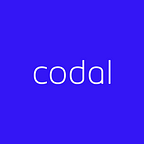From Idea to Impact: Navigating the Digital Product Development Journey
The process of developing a digital product from conception to major effect is intricate and multifaceted. It involves not only technical execution but also ongoing repetition, strategic planning, and market comprehension. This is a comprehensive analysis of the phases involved in the process of developing a digital product.
1. Ideation and Concept Validation
The journey starts with an idea. This concept can come from a user’s input, a technology innovation, a personal experience, or the identification of a market gap. Idea generation sessions, mind mapping, and talking about possible solutions are all part of the ideation process. At this point, defining the issue your product will address and defining the fundamental idea are the main objectives.
- Concept Validation: It is essential to validate the concept before allocating substantial resources. This can be done through:
- Market Research: Analyze market trends, competitor products, and user needs.
- Surveys and Interviews: Meet prospective customers to get their opinions on the idea.
- Minimum Viable Product: Create a basic version of the product with the essential functions to verify ideas and get input from users.
2. Planning and Strategy
Detailed planning follows next when the concept has been proven. This involves:
- Defining Objectives and Goals: Give a clear description of your goals for the product.
- Target Audience: Find out and understand the requirements and preferences of your intended user base.
- Competitive Analysis: To figure out what makes you stand out, research your competition.
- Technology Stack: Select the tools and technologies needed for development.
- Project Management: Develop a project plan with budgets, schedules, milestones, and resource allocation included. Agile approaches are frequently chosen in the development of digital products because of their adaptability and iterative nature.
3. Design and Prototyping
Given its immediate impact on the user interface and experience, design is a crucial phase in the product development process. The design process includes:
- Wireframing: Creating the product’s fundamental structures and layouts.
Creating interactive models to test usability and illustrate the product is known as prototyping. - User Testing: Verify designs’ usability to get feedback and make any necessary changes.
- Iterative Design: Iterative design ensures that the final product is intuitive and user-friendly through constant feedback and adjustments.
4. Development
The process of actually building the product takes place throughout development. This stage involves:
- Front-end Development: Developing the user interface and making sure it’s accessible and responsive.
- Back-end Development: Establishing the database, application logic, and server.
- Integration: Ensuring that the front-end and back-end components integrate seamlessly.
- Agile Development: Using agile techniques to manage the development process, such as continuous integration, daily stand-ups, and sprints, can help.
5. Testing and Quality Assurance
To make sure the product works well and satisfies the necessary requirements, testing is essential. This involves:
- Unit Testing: Verifying the functionality of various components.
Integration Testing: Verifying that various parts function as a unit. - System Testing: Validating the entire system’s performance and functionality.
- User Acceptance Testing: Requesting customers to test and evaluate the product.
- Automated Testing: Using automated testing methods, especially for regression testing, can improve coverage and efficiency.
6. Deployment and Launch
The product is prepared for deployment after it passes every test. This involves:
- Deployment Planning: Ensuring a smooth transition from development to production.
- Monitoring: Putting in place measures for tracking the performance of the product after launch.
- Marketing and Promotion: Creating a plan for promoting the product through influencer alliances, press releases, and social media campaigns.
- Soft Launch: Before a full-scale debut, think about doing a soft launch to a small audience to get early feedback and make any necessary revisions.
7. Post-Launch and Maintenance
After launch, the journey continues. The product’s long-term success depends on post-launch operations.
- Monitoring and Analytics: Keep an eye on performance indicators and user engagement to spot areas that need work.
User Feedback: Gather and evaluate user feedback on a regular basis to learn about their requirements and preferences. - Updates and Iterations: Apply updates and new features in response to user comments and industry developments.
- Support and Maintenance: supplying continuing maintenance and support to resolve any problems and guarantee the product stays operational and relevant.
8. Scaling and Growth
As the product becomes popular, scaling and growth become more important. This involves:
- Market Expansion: investigating new user groups and marketplaces.
Adding new features on a regular basis to improve the user experience is called feature enhancement. - Performance Optimization: confirming that the solution can manage a rise in user load and traffic.
- Partnerships and Collaborations: Creating strategic alliances and working together can help a product grow faster and reach a wider audience.
The process of developing a digital product from idea to impact is dynamic and iterative. It calls for ingenuity, tactical preparation, technological know-how, and a thorough comprehension of user requirements. Businesses can turn creative ideas into impactful digital products that resonate with users and drive market success by taking an organized approach to creativity, planning, design, development, testing, launch, and post-launch activities, and by being open to continuous learning and adaptation.
